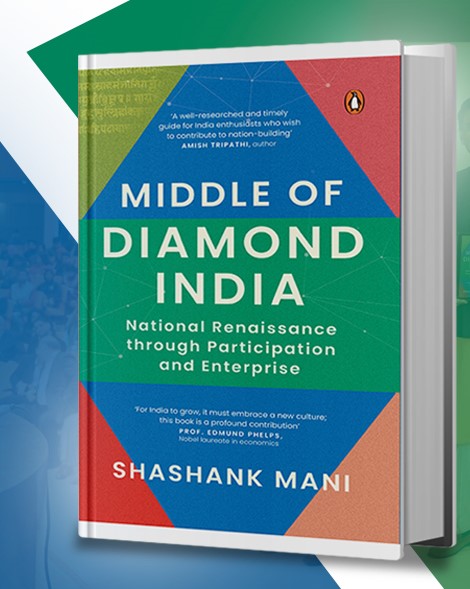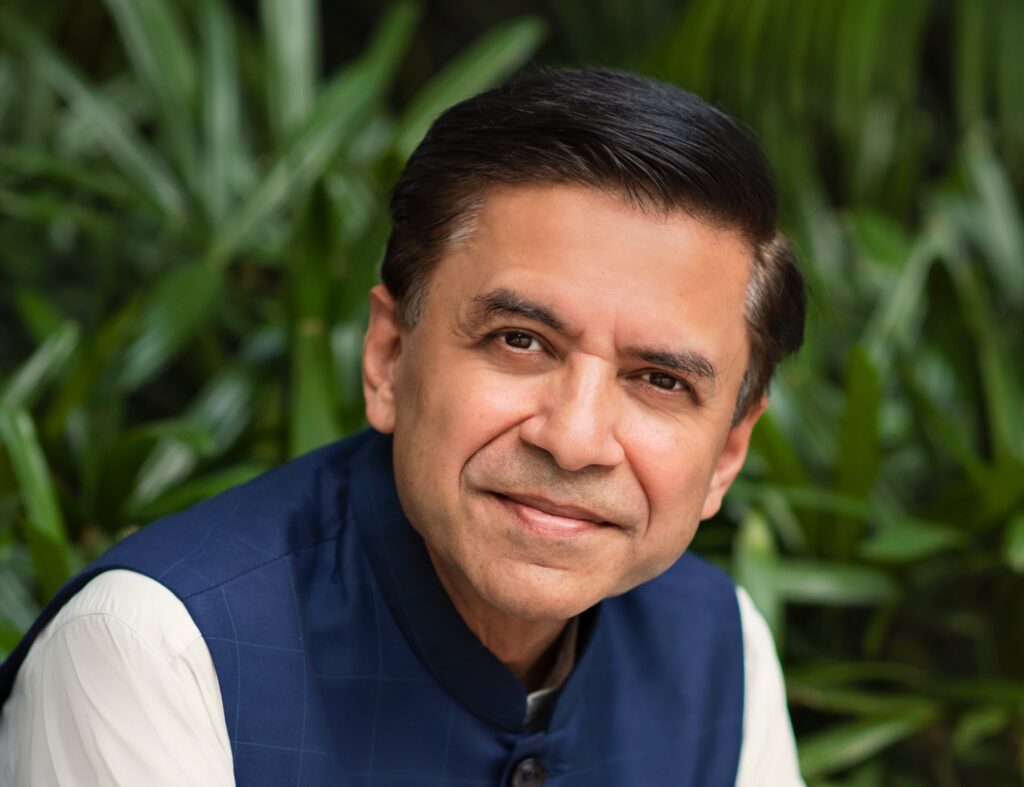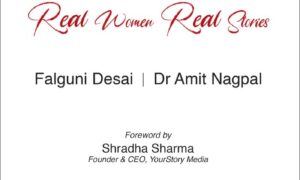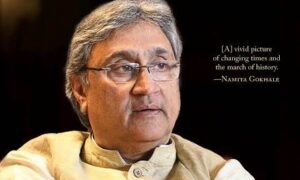
Shashank Mani’s Middle of Diamond India: National Renaissance through Participation and Enterprise reveals the hidden stories of those in the Middle, that is those in the tier 2 and tier 3 cities, who have been overlooked owing to their location and language.
In today’s India, the greatest determinant of whether a person will progress to health, wealth and prosperity is if he or she is lucky to be born at the Top of the Diamond. The definition of New India is that those from the Middle can do so with equal felicity and ease. That upward movement need not be led by the government. Our democratic systems and the arrangement of our polity, economy and society should allow millions to do this on their own, with the state enabling this process. That was the promise our founding fathers made—that swaraj would go beyond political freedom to encompass ‘the freedom to be yourself’ and that ‘Swaraj was more than making India free; swaraj is the becoming Indian of the self of millions and millions of people.
The Middle as an anchor
The Middle can become a new fulcrum where Top, Middle and Bottom work in tandem for national renewal. An example of this mutuality and benefit is the story of Parvati11, a young twenty-seven-year-old from a village near Deoria. Not highly educated, Parvati was roundly criticized by her brother and father when they observed her spending time on her rooftop peering into her smartphone. The signal for the smartphone was the best there, and Parvati was looking at designs of jewellery on the Internet.
Gaining confidence, she retailed some bracelets to shops in her village and then took her products to bazaars in nearby Deoria and Kushinagar. Her real break came when she came on board the Jagriti Yatra as a participant and sold some jewellery while the train circled India, proving that as a salesperson, there were very few who could beat her. Courageous and persistent, Parvati was not only making jewellery, she was also able to talk about her products with conviction and passion. She stayed back in Mumbai after the Yatra and decided that she would go back only after selling her stock.
Around this time, at a social gathering in Mumbai, she met Prerna, who instantly saw the beauty, both in the product and in the personal conviction that this girl from a Tier 3 district exuded. Over a couple of conversations, an unusual relationship formed between Prerna and Parvati. Prerna worked for a television company but had always wanted to do something on her own. In Parvati, she saw a mirror image of herself, but from a village of the type she had never visited. This bond was of common conviction and purpose as both wanted local women to benefit. Modern communication, logistics, the Internet and our network connected them in the unusual setting of a cocktail party in Mumbai. Prerna, a high-flying executive in Mumbai, and Parvati, the rebel daughter of a farmer from Deoria, came together to form a handicraft company.
Parvati and Prerna became equal partners in the venture. Parvati brought production knowledge and a team of locally trained women for jewellery and other artefacts to be produced in Deoria; Prerna brought business acumen and marketing flair. Prerna came up with an elegant design that positioned the brand such that the company could connect with the sophisticated upper end of the jewellery market. In a year, the duo had started creating jewellery that caught the attention of Fabindia and the first order was delivered. In subsequent years, their products were retailed overseas in Dubai and a graph of growth was charted. The small village from where Parvati hails has turned an unusual leaf. Those who were critical of Parvati’s rooftop activities are now looking up to her. What a generation of women’s emancipation could not achieve, this connection made possible within a few years.

The venture has gone through its ups and downs. Finance, marketing and hiring new people has not been easy. A key issue is that Parvati is often consumed by family and local issues that are part of rural life. When her mother is ill, she drops production and rushes to help her. When her fiancé had a bereavement in his family, she had to leave her business unattended. But as the infrastructure and ecosystem in Deoria improves, the journey has become smoother. It reminds us of the possibilities of what can happen when the Middle and the Top combine to influence the Bottom meaningfully. Middle India must enable more Parvatis and there should be a network to connect them to more Prernas. Most economic acts in India—be it the ease of business, be it creating an SEZ or other infrastructure—still look at the Top of the Diamond as a safe bet. The belief still is that trickle-down will benefit those below the Top. A direct focus on the Middle as India turns seventy-five will impact the Top, Middle and Bottom together. The Middle of the Diamond can be a better friend to the Bottom since, a few decades ago, they were themselves at the Bottom. Parvati recognizes the strengths and weaknesses of those at the Bottom and can pull poor women up based on mutual help and respect, caring and nurturing. Development, like any human endeavour, is seldom a financial or technical act. It requires helping in a human way, which Parvati understands as she is proximate to the Bottom. Tying a safety net for the Bottom to the aprons of those in the Middle will yield a far better outcome than a trapeze act from the Top. Over time, the poor at the Bottom one day may reduce to zero as the Middle bulges out and rises to the Top. I see a day where Prahalad’s promise of a pyramid-shaped world may remain, but it will be an inverted pyramid.
Book Excerpt – Pg 37-40
(Extracted with permission from the author and the publisher Penguin Random House India)
[the_ad id=”55722″]


















